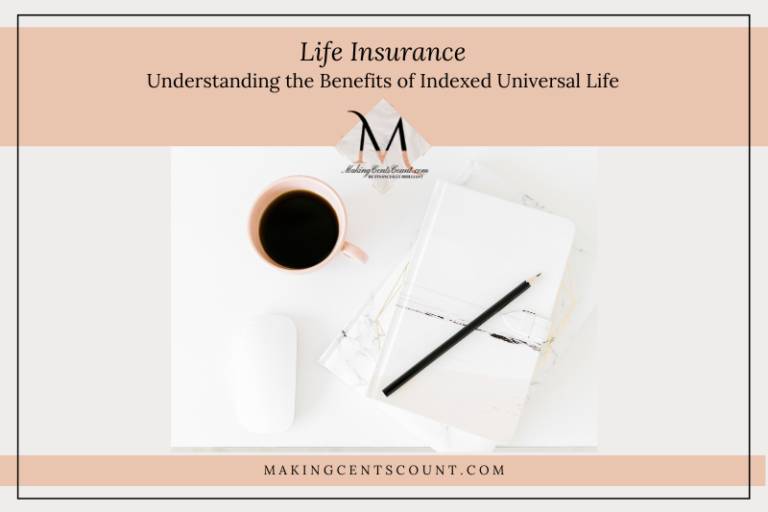Understanding Life Insurance Riders and Endorsements: Life Insurance Terminology Defined
Estimated reading time: 24 minutes
Understanding life insurance riders and endorsements is key to ensuring you have a clear grasp of your life insurance policy. Familiarizing yourself with the terminology associated with these additional features can make a significant difference in comprehending the intricacies of your coverage. We will define and explore the various terminologies related to life insurance riders and endorsements, providing you with the knowledge needed to make informed decisions about your policy. Let’s dive in and demystify the world of life insurance!
Table of Contents
- Unlocking the Power of Life Insurance Riders: Discover Endorsements and Benefits
- The Insured vs. Policy Owner: Unraveling the Insurance Conundrum
- Unveiling the Mystery: Who Can Own It?
- The Power of Ownership: Total Control in Your Hands
- Unveiling Life Insurance Riders and Endorsements: A Dive into Terminology
- Accelerated Death Benefit: Unlocking Financial Assistance in Times of Need
- Uncover the Unexpected: The Accidental Death Benefit Rider
- Insure with Confidence: The Additional Insured Rider
- Sky High: The Aviation Exclusion Rider
- Supercharge Your Policy: Introducing the Child Term Rider
- Decoding “Eligible” Children: Unveiling the Meaning
- No Proof of Insurability Needed: The Conversion Option = Game-Changer
- Unlocking the Power: The Crucial Importance of the Conversion Option
- Simplify Monthly Deductions: Disability Waiver of Monthly Deductions Rider
- Get Protected: Disability Waiver of Premium Rider
- Double Indemnity Rider: Double the Protection, Double the Peace of Mind
- Secure Your Family’s Future: Family Income Benefit Rider
- Discover the Key to Your New Life Insurance Policy: Embrace the Free Look Period
- Unlocking the Secrets: The Grace Period of Life Insurance
- Unleash the Power: The Guaranteed Purchase Option Rider
- Secure Your Future: Long-Term Care Rider
- Unbreakable Promise: The No-Lapse Guarantee
- Unlocking Non-Forfeiture Options: Maximizing Your Benefits
- Protecting Your Child’s Financial Future: Payor Death or Disability Rider
- Insure with Style: The Primary Insured Rider
- Reclaim Your Position: Mastering the Art of Policy Reinstatement
- Get Back What’s Yours: The Return of Premium Rider
- Insure on the Fly: Your Temporary Insurance Agreement
- Adventure Safeguard: Protect Your Travels with the Travel Accident Rider
- Code Cracked: Unlocking Confidence for the Future
- Burhoe Insurance Solutions: Your Trusted Source for Insurance + Financial Services
- Take Charge + Reclaim Your Power
- Making Cents Count Financial Organizer
Are you ready to start investing, control your finances, and prepare for retirement? Join our amazing community! You’ll receive exclusive financial tips from Making Cents Count, as well as unlimited FREE access to our resource library full of money-saving tools and guides.
Unlocking the Power of Life Insurance Riders: Discover Endorsements and Benefits
You can enhance your insurance policy by adding additional features known as life insurance riders and endorsements. These valuable additions allow you to customize your coverage to align with your current needs as well as the future requirements of your beneficiaries. While it’s true that they may raise the cost of your life insurance policy, the benefits of customization are well worth the investment. With riders and endorsements, you have the opportunity to tailor your policy to provide comprehensive protection and peace of mind.
Please note that life insurance riders and endorsements may vary depending on the state, life insurance provider, and policy type. Certain states have stricter regulations regarding the types of life insurance policies available, which may limit your options. Life insurance riders and benefits may have restrictions based on factors such as age or health, depending on your table rating. If you fall into a substandard risk class, your choices may be more limited.
The Insured vs. Policy Owner: Unraveling the Insurance Conundrum
Before exploring the terminology related to life insurance riders and endorsements, it is crucial to have a clear understanding of the difference between the insured and the policy owner. You may be wondering who has the ultimate authority to make changes to an insurance policy. The answer is always the owner. When it comes to policy decisions and changes, the owner’s decision always takes precedence over the insured.
Unveiling the Mystery: Who Can Own It?
A diverse range of individuals and entities can own life insurance policies. From individuals to various organizations, the spectrum of policy owners is wide and varied.
The Insured
Typically, the owner of an insurance policy is the insured individual who has purchased the life insurance policy, ensuring financial security for their loved ones.
Parent or Guardian
Parents or guardians can also act as the policy owner, obtaining coverage to protect their children or dependents. This approach not only helps secure a policy for them early in life when the premiums are low but also provides an opportunity to provide additional tax-free income for them in the future.
A Spouse
A spouse may obtain a policy to protect their partner’s financial well-being in the unfortunate event of their passing. Naturally, securing the actual life insurance policy requires the spouse’s knowledge and consent. In certain cases, when spouses apply for insurance jointly, they may choose to be owners of each other’s life insurance policies.
Former Spouse
As per the divorce decree, it may be necessary for a former spouse to maintain a life insurance policy on themselves. This requirement may arise due to shared business interests, jointly owned real estate, or the presence of minor or college-aged children.
Anyone with Shared Monetary Interests
This can encompass individuals such as friends, partners, or fiancés who have co-invested in real estate or embarked on a joint business venture. It also applies to anyone with shared financial interests, for example.
Business Owners
Business owners can also own life insurance policies. In fact, it is quite common for business partners to take out life insurance policies on one another, particularly in the case of buy-sell agreements. A buy-sell agreement aims to safeguard the interests of remaining partners in cases where one partner dies, retires, or leaves the business. By doing so, they are proactively protecting and securing their company’s interests, ensuring a smooth transition.
Corporations
This is a common practice frequently adopted by companies to safeguard their business interests. It involves acquiring life insurance policies, known as key person coverage. Key person insurance is specifically designed to assist a company in recovering from the financial loss caused by the death of an owner, partner, or essential employee who plays a vital role in the company’s success. It provides financial protection by granting businesses the time to find and train replacements for key employees. By implementing such policies, companies can effectively mitigate potential financial risks and ensure business continuity, even in challenging times.
Trust
A trust can also serve as the owner of a life insurance policy. Affluent clients often use trust-owned life insurance policies (TOLI) to optimize tax efficiency when transferring assets to future generations. By placing the policy under the ownership of a trust, it effectively removes the life insurance proceeds from your estate. Creating a legally binding agreement is crucial to ensure that the proceeds are directed according to your intended wishes.
Organizations + Associations
Finally, organizations or associations may own life insurance policies, providing benefits or assistance to their members. With this level of flexibility, life insurance policies address the diverse needs and situations of individuals, families, and businesses alike.
The Power of Ownership: Total Control in Your Hands
When entering into an investment or agreement with another party, a life insurance policy can serve as a reliable safety net, providing financial protection in case of unforeseen circumstances. In case someone passes away, a life insurance policy helps ease the burden of associated costs. It ensures that you won’t shoulder their debts alone or face overwhelming financial liability.
As we review these life insurance terms, I have chosen to simplify them. It is important to note that in the life insurance rider and endorsement terminology discussed below, the terms “insured” and “owner” refer to the same individual.
Unveiling Life Insurance Riders and Endorsements: A Dive into Terminology
It is crucial to approach the purchase of any life insurance policy with full awareness. Familiarizing yourself with life insurance terminology and the available riders and benefits is key. By doing so, you can make informed decisions that will benefit you and your beneficiaries in the long run. Below, I have outlined the important life insurance rider and endorsement terms you should be aware of.
Understanding life insurance terminology is crucial for comprehending the coverage of your life policy. Eliminating unwelcome surprises in the insurance arena is vital. Don’t let yourself get caught off guard when you need it most – ensure you fully understand the extent of your policy’s coverage.
For example, critical illness insurance is a policy that provides a lump sum benefit if you are diagnosed with a specified critical illness or condition. This helps alleviate the financial burden that often accompanies such illnesses, allowing you to focus on recovery. Moreover, policy benefits enable you to fund experimental treatments that may not be covered by your health insurance or to support travel for treatments in other locations.
Accelerated Death Benefit: Unlocking Financial Assistance in Times of Need
Many refer to the Accelerated Death Benefit Endorsement (ADB) as a living benefit. If you receive a terminal illness diagnosis with less than 12 months to live (duration may vary by state and life insurance provider), you can choose to request a loan as an advance on a portion of the death benefit. The advance amount usually has a limit of 50% of the total death benefit or a predetermined maximum amount, whichever is lower. You can find the specific terms and conditions in your policy contract.
Please note that the Accelerated Death Benefit loan, any interest, and outstanding loans on your policy may reduce your death benefit. Typically, there is no extra fee for an Accelerated Death Benefit endorsement, but it is advisable to verify this information with your life insurance carrier.
Uncover the Unexpected: The Accidental Death Benefit Rider
If you pass away in an accident or due to accidental causes, your life insurance provider will provide your beneficiary with the Accidental Death Benefit amount specified in your policy. This rider typically has a minimum and maximum age limit and terminates upon one of these three triggering events. Rest assured that your policy will clearly outline these details.
- When your life insurance policy is terminated.
- Upon the policy anniversary, following a specific age (usually age 65). The exact age is life insurance carrier-specific, so check your policy.
- Upon your written request to cancel the Accidental Death Benefit Rider.
Insure with Confidence: The Additional Insured Rider
An Additional Insured Rider (AIR) provides coverage for an additional individual on your life insurance policy. The AIR typically has a minimum death benefit amount, which cannot exceed the base face amount of the primary insured. In simpler terms, the additionally insured person cannot have more life insurance coverage than the primary insured. If your significant other has primary insurance coverage of one million dollars, you cannot add yourself as the Additional Insured Rider for two million dollars.
An Additional Insured Rider (AIR) can be a cost-effective solution to include your spouse or a business partner in your policy. It’s worth noting that not all life insurance carriers provide an AIR option, as it varies depending on the policy and type of insurance you’re considering.
The events that result in the termination of AIR are as follows::
- The life insurance policy is terminated.
- The primary insured dies.
- The policy anniversary following a specific age (usually age 100). This is carrier-specific, so confirm the details in your life insurance policy.
Sky High: The Aviation Exclusion Rider
The Aviation Exclusion Rider provides a non-rated life insurance policy tailored to aviation-related activities. With explicit terms, the rider specifies that the policy becomes null and void in the unfortunate event of an aviation-related accident resulting in fatality.
The specifics regarding an invalid and unenforceable contract.:
- Travel or flight in any kind of aircraft.
- Giving or receiving any kind of aviation training or instruction.
- Intentionally leaving, falling, or jumping from an aircraft while in flight.
This rider does not apply if you are traveling on a scheduled airline as a licensed pilot, crewmember, or passenger.
Private pilots and hobbyists now have to fill out an “Aviation Questionnaire” to assess their risk. This questionnaire, sent by your life insurance carrier’s underwriting department, covers various aspects including total flight hours, destinations, and other risk factors.
Supercharge Your Policy: Introducing the Child Term Rider
The Child Term Rider (CTR) is a life insurance rider that offers term insurance coverage for eligible children. Coverage options can range from $1,000 up to a maximum of $100,000 (depending on the insurance carrier) of life insurance per child, regardless of the number of policies you own. It is advisable to verify the specifics with the life insurance carrier you are considering. When considering factors, it’s important to take into account the amount of life insurance parents have on themselves. Usually, a parent policy limits the face amount of a CTR to a third to a half.
The insurance carrier evaluates larger face amounts for suitability. How can one justify having an extensive life insurance policy on a child? If a parent doesn’t have life insurance but wants a policy for their child, the underwriting review will typically evaluate the request or decline it. There are limitations to the amount of coverage a child can have, regardless of whether they have a policy or coverage under a CTR.
Decoding “Eligible” Children: Unveiling the Meaning
An “eligible” child refers to a child who meets the following criteria:
- They’re dependent upon you for support.
- They’re living with you within your household.
- They’re going to school on either a full-time or part-time basis.
With the Child Term Rider on your policy, you automatically receive coverage for your children within the specified parameters.
- Any child at least 15-days-old born to the insured after the CTR is in-force.
- If any child between 15 days and 18-years-old is legally adopted or becomes a stepchild of the insured after the CTR is in-force. Check with the specific insurance carrier you’re considering as select carriers will offer the CTR beyond 18-years old.
The CTR usually expires when the child is no longer a dependent, turns 25, or gets married. Additionally, a conversion option may be available with the Child Term Rider, allowing your adult children to obtain their own life insurance policy. It is advisable to consult your life insurance carrier for more detailed information.
No Proof of Insurability Needed: The Conversion Option = Game-Changer
Your life insurance carrier offers a convenient feature called a Conversion Option. It allows you to seamlessly convert your term policy into a permanent policy without needing to provide additional proof of insurability. You have the flexibility to exchange (convert) your term policy into a new permanent policy, ensuring long-term financial protection.
There is a maximum age for converting a term policy. It is advisable to convert your policy at a younger age, as this will result in lower long-term costs. The age limits for policy conversion vary depending on your life insurance carrier. Some allow conversion until your 65th birthday, while others extend the option until your 75th. For a comprehensive understanding of life insurance, I invite you to read my post on “7 Facts You Need to Know About Life Insurance”.
Not all life insurance carriers provide convertibility options on term policies. If this is the situation while you’re shopping for a term policy, it would be advisable to consider other options. Term policies can potentially result in higher costs in the long-term.
Unlocking the Power: The Crucial Importance of the Conversion Option
The conversion option is undeniably the most crucial advantage of term life insurance. As we age, it’s not always the case that our health improves (shocking, I know). In the unfortunate event of a terminal illness or if you become uninsurable, the conversion option offers you the chance to convert your term policy into a permanent one. This eliminates the need for proof of insurability. Additionally, since your carrier approved you when you initially obtained your policy, you can rest assured that your coverage will remain intact.
If you were once hailed as a “perfect specimen” but now find yourself less flawless, don’t worry. When you convert your policy to a permanent one, that coveted “perfect specimen” rating will still hold true. Although your new premium will increase as you switch from temporary to permanent life insurance, rest assured that this increase will not occur again during your lifetime. Meaning, you can lock in your premium, giving you peace of mind. For many of my clients, the conversion option has proven to be a true blessing, making the choice of insurance carrier a paramount consideration when considering term life insurance.
Simplify Monthly Deductions: Disability Waiver of Monthly Deductions Rider
The Disability Waiver of Monthly Deductions Rider covers all monthly deductions during your disability, following a waiting period of six months. It only covers the deductions, not the full premium, and does not contribute to the cash value. The duration of coverage for monthly deductions varies depending on the age at which you become disabled.
For the first six months, your permanent life insurance policy deducts the payment for monthly deductions from the Accumulation Value. If the disability continues, they usually refund these charges to you. Please note that this rider ordinarily terminates at age 65 and may differ depending on the state, life insurance carrier, and product.
Get Protected: Disability Waiver of Premium Rider
The Disability of Waiver Premium Rider safeguards your coverage in case of total disability lasting six or more consecutive months (typically before turning 60). During the first six months, you must continue paying life insurance premiums to keep your permanent policy active. However, if the life insurance carrier determines that you are totally and permanently disabled, they may refund those premiums to you. Rest assured, this rider ensures your protection and peace of mind.
Additionally, the life insurance carrier might waive a specific premium amount that becomes payable after six months of total disability, for the duration of your disability. It is important to note that this rider typically ends at age 65 and may vary depending on the state, life insurance carrier, and product.
Disability Income Insurance
Remember, disability income insurance is a valuable product that provides financial support if you can’t work due to illness or injury. People often call it “paycheck protection” since it helps to replace a significant portion of your income. Alongside life insurance, disability insurance offers crucial protection to secure your family’s home and other valuable assets, should the unexpected occur.
Double Indemnity Rider: Double the Protection, Double the Peace of Mind
The Double Indemnity Rider is a provision in which the life insurance carrier commits to providing an additional payment to your beneficiaries in the unfortunate event of your accidental death.
The payment amount can vary from double to triple the value of your contract. It’s important to note that this rider does not cover death by suicide, death by your own gross negligence, or natural causes (it applies only to accidents not falling under those conditions). The specifics of a Double Indemnity Rider may differ depending on the state, life insurance provider, and product.
Secure Your Family’s Future: Family Income Benefit Rider
The Family Income Rider provides the option to distribute the death benefit proceeds of your life insurance policy to beneficiaries in installments rather than a one-time lump sum. It’s important to note that the parameters of the Family Income Benefit Rider may vary depending on your state, life insurance carrier, and product.
Discover the Key to Your New Life Insurance Policy: Embrace the Free Look Period
The Free Look Period is precisely as it sounds – universally acknowledged as the policy owner’s right to thoroughly examine their new life insurance policy within a designated period of 10 to 30 days, depending on the state of issuance. It is important to note that each state has its own distinct timeframe, which may vary substantially.
During this evaluation period, you have the opportunity to thoroughly review your policy and, if necessary, return it for a full refund of the premium you paid. Ending the policy within the free look period incurs no penalties, such as surrender charges. So, if you think you’ve made an incorrect decision, rest assured that you can reconsider and retract your investment.
Unlocking the Secrets: The Grace Period of Life Insurance
Grace periods typically span approximately 30 days, although the duration may vary based on your policy. In certain situations, select insurers might offer extensions of up to 60 or even 90 days.
Due to the disruption caused by the Novel Coronavirus (COVID-19) outbreak, many states mandated insurance payment extensions and other relief. According to Sapiens, while these efforts to ease the financial strain on policyholders are in the form of time extensions, not the forgiveness of the payments. If you use a longer grace period or are able to “skip” insurance payments, your total bill will still accumulate.
Unleash the Power: The Guaranteed Purchase Option Rider
The Guaranteed Purchase Option Rider provides you with the opportunity to acquire additional coverage at your original underwriting class, without the need to provide proof of insurability. This rider allows you to purchase options at specific dates and events that occur during the duration of the Guaranteed Purchase Option Rider. Please be aware that option dates may have limited availability, and the specifics of this life insurance rider may vary by state, life insurance carrier, and product.
Secure Your Future: Long-Term Care Rider
The Long-Term Care Rider (LTC) provides benefits to cover a wide range of care needs, from nursing homes to in-home healthcare, when you are unable to care for yourself. Deducting the cost of care from your policy’s eventual death benefit ensures comprehensive coverage and peace of mind.
The LTC rider typically imposes a limit on the amount of coverage offered. These riders can become quite intricate, especially when obtained as standalone policies. It’s a good idea to consult your insurance carrier for specific details about this rider. Make sure you have a clear understanding of what is covered and, more importantly, what is not.
Given the considerable variations in Long-Term-Care benefits across states, life insurance carriers, and products, I strongly urge you to conduct thorough research or seek assistance from our trusted insurance agency, Burhoe Insurance Solutions, to support you in your quest.
Unbreakable Promise: The No-Lapse Guarantee
The no-lapse guarantee premium is the necessary payment to maintain an in force policy for a specified number of years, irrespective of its actual performance. During this period, the insurer ensures uninterrupted coverage, even if the cash value reaches zero. However, the policy may lapse once the guarantee period ends unless you pay a significantly higher premium. The no-lapse period can range from as short as five years to extending until age 121.
Universal life insurance policies with this feature typically offer lower premiums compared to other life insurance products due to their minimal or nonexistent cash value. However, to ensure the effectiveness of the guarantee, regular and timely payment of premiums is crucial. It is important to note that contracts with longer guarantee periods often accumulate significantly less cash value compared to contracts using a target premium or other non-guaranteed options.
Unlocking Non-Forfeiture Options: Maximizing Your Benefits
Reduced Paid-Up:
The Reduced Paid-Up Option allows your policy to convert into a smaller, yet fully paid-up life insurance policy that remains in force. This option is ideal if you have a minimal need for life insurance but still desire some coverage without the burden of premium payments.
Extended Term Insurance:
This utilizes the cash value from your life insurance policy as a lump sum to purchase term life insurance. Consider this choice if you have lingering debt that will remain unsettled for a specific number of years. It covers for a designated duration, but once that time elapses, it terminates your coverage.
Premium Loan:
The Automatic Premium Loan occurs when the premium remains unpaid after the Grace Period. In such cases, the policy utilizes the cash value to trigger a loan that covers the outstanding premium amount.
Protecting Your Child’s Financial Future: Payor Death or Disability Rider
The main objective of the Payor Death or Disability Rider is to provide coverage for monthly deductions of a policy issued on the life of a child. This coverage applies in the event of your – the payor’s – death or total disability before reaching the age of 60, while the insured is younger than 25. It’s important to note that the specifics of this rider may vary depending on the state, life insurance provider, and product.
The Payor Death or Disability Rider typically ceases to be in effect when:
- The policy terminates.
- Once the insured turns 25 years old.
- Upon written request to your life carrier.
Insure with Style: The Primary Insured Rider
The Primary Insured Rider offers level term insurance on the primary insured, which is you. This option provides a cost-effective way to obtain coverage compared to a permanent life insurance plan with the same face amount. Usually, you need to meet a minimum base amount requirement, and the policy has to be permanent. It’s important to note that, in most cases, the face amount of the Primary Insured Rider cannot exceed four times the base policy face amount. Please be aware that the specifics of the rider may vary depending on the state, life insurance carrier, and product.
A Primary Insured Rider typically ends on the earlier of:
- When the policy terminates.
- On the policy anniversary following the Primary Insured’s age 100.
Reclaim Your Position: Mastering the Art of Policy Reinstatement
Reinstatement enables the resumption of a previously terminated policy, ensuring effective coverage. The life insurance carrier may request evidence of insurability, such as an updated medical examination (which entails going through the underwriting process again), and complete payment of all outstanding premiums. The process will involve necessary medical requirements based on your current age and desired death benefit amount.
Life insurance carriers can reinstate policies after the grace period has expired and the contract is no longer active. However, if the policyholder passed away before the reinstatement, beneficiaries will not receive a payout.
The process of reinstatement varies across insurance policies and carriers. Each life insurance carrier has its own guidelines for reinstating a policy, typically within a three to five-year period after the lapse. It’s important to understand the specific requirements and procedures set by your carrier to reinstate your life insurance policy.
Get Back What’s Yours: The Return of Premium Rider
You can add the Return of Premium Rider (ROP) to a standard term life insurance policy, but it will come at a higher cost. With this rider, if you outlive your coverage, you will receive 100% of the premiums you paid during the chosen term-length. Essentially, there is zero-net-cost to you. The ROP option is particularly attractive to individuals who prefer not to feel like they are “throwing their money away” on insurance premiums. However, it’s important to note that the availability and specifics of this rider can vary depending on the state, life insurance carrier, and product.
Key points to consider regarding the ROP Rider:
- If you have an ROP Rider, you typically cannot include additional riders in the policy..
- ROP Riders are typically not offered for risk classes that are below standard..
- When adding the ROP, there is usually a minimum term length requirement..
- Typically, longer term lengths result in lower premiums, meaning a 30-year term policy with ROP is usually less expensive compared to a 25-year term policy with ROP.
- Typically, terminating the life insurance policy is required in order to remove the ROP Rider..
Insure on the Fly: Your Temporary Insurance Agreement
The Temporary Insurance Agreement (TIA) offers immediate life insurance coverage while the insurance carrier reviews and approves your policy. However, it’s important to note that there are limitations on the maximum amount the TIA can cover, particularly for higher death benefit amounts. Rest assured, the TIA ensures you have protection during the underwriting process.
As part of the application process, you will encounter a series of qualifying questions to determine your eligibility for the TIA. To qualify, you must meet three specific conditions.
- To activate the TIA, the initial month’s premium must be paid..
- That the application is fully completed and includes all necessary signatures.
- As the insured, it is imperative that you can provide truthful “no” responses to all questions on the TIA form.
Many applicants fail to realize that once the carrier approves their policy, their TIA (Temporary Insurance Agreement) is no longer valid. The life insurance they had when they submitted the application is now null and void. It is crucial to promptly make any desired policy changes to avoid complications.
Adventure Safeguard: Protect Your Travels with the Travel Accident Rider
The Travel Accident Rider ensures that in the event of your death during a covered travel accident, your beneficiary will receive an additional death benefit specifically for travel accidents, in addition to the predetermined amount stated in your life insurance contract.
The coverage for travel accidents may differ depending on the life insurance carriers, so it’s important to verify the specific details. Typically, Travel Accident Riders encompass activities such as cycling and riding as a passenger in public land or water vehicles. These modes of transportation may include golf carts, driving, or being a passenger in a privately-owned vehicle. Confirming the coverage specifics is crucial to ensure you have adequate protection during your travels.
With the rise of Uber and Lyft as common modes of transportation, it is probable that the definition of “private passenger automobile” and its exclusions will undergo revisions. Additionally, the Travel Accident Rider provides coverage for passengers on scheduled passenger airlines. It is worth noting that the specifics of this rider may differ depending on the state, life insurance provider, and product.
Code Cracked: Unlocking Confidence for the Future
Gaining a comprehensive understanding of life insurance riders, endorsements, and benefits enables you to make informed decisions when selecting a policy. Familiarizing yourself with the terminology surrounding these aspects allows you to confidently navigate the multitude of options available and find coverage that suits your unique needs and circumstances. Remember, life insurance provides financial security and peace of mind, protecting both you and your loved ones. So, explore the alternatives, consult with Burhoe Insurance Solutions, and choose with confidence and protection in mind, no matter the situation.
Burhoe Insurance Solutions: Your Trusted Source for Insurance + Financial Services
At Burhoe Insurance Solutions, our team of experts is dedicated to assisting you in navigating the complex world of insurance. We understand that your financial journey is unique, and we are here to help you every step of the way. Whether you’re looking for life insurance to plan for different life stages or seeking a range of products supported by our top-tier insurance carriers, we have you covered. Our priority is to work within your budget and provide the insurance solutions that best suit your needs. Trust us to guide you through the process and ensure that you have the coverage you deserve.
Prefer to take the lead? Feel free to fill out this brief form. We’ll then tailor policy options that align perfectly with your coverage and financial requirements.
Take Charge + Reclaim Your Power
Lastly, if working on your finances is one of your goals right now (or, maybe it’s been a goal for some time), I suggest starting with the Making Cents Count Financial Organizer.
Our financial organizer is the robust answer you need. The organizer is our DIY financial services option, providing you with the tools to eliminate financial overwhelm.
In the exclusive Making Cents Count Financial Organizer, you’ll get:
- Clear strategies to get your finances under control
- Processes to organize and streamline your investments
- Guidance to track your legal documents, tax information, and permanent records
- Markers to know when you should meet with an attorney to establish a will or trust
- Templates, checklists, and step-by-step actions
- Insights on the financial-must haves to build a secure future
- Detailed How-To Guide for optimal results
If you want financial confidence, grab the Financial Organizer, and get results that fit *your* lifestyle!
Making Cents Count Financial Organizer
Once you get your budget rolling, check out my post on 6 Simple Steps to Get Financially Organized. This post also includes a helpful checklist available in my Resource Library (free to access).
Admittedly, this particular checklist has a larger-scale focus on your overall financial picture, but I genuinely feel that getting your finances organized is essential.
I’m so excited to invite you to join our Financial Success Society Waitlist! Our enrollment opens soon (so don’t miss a chance to get on the notification list). Your journey to financial success is unique and with this exclusive membership, you’ll receive the guidance you desire, enabling you to move financially forward, no matter where you are in your financial journey. At Making Cents Count, we offer an array of outstanding products and services to help you get control of your finances so they won’t control you!







